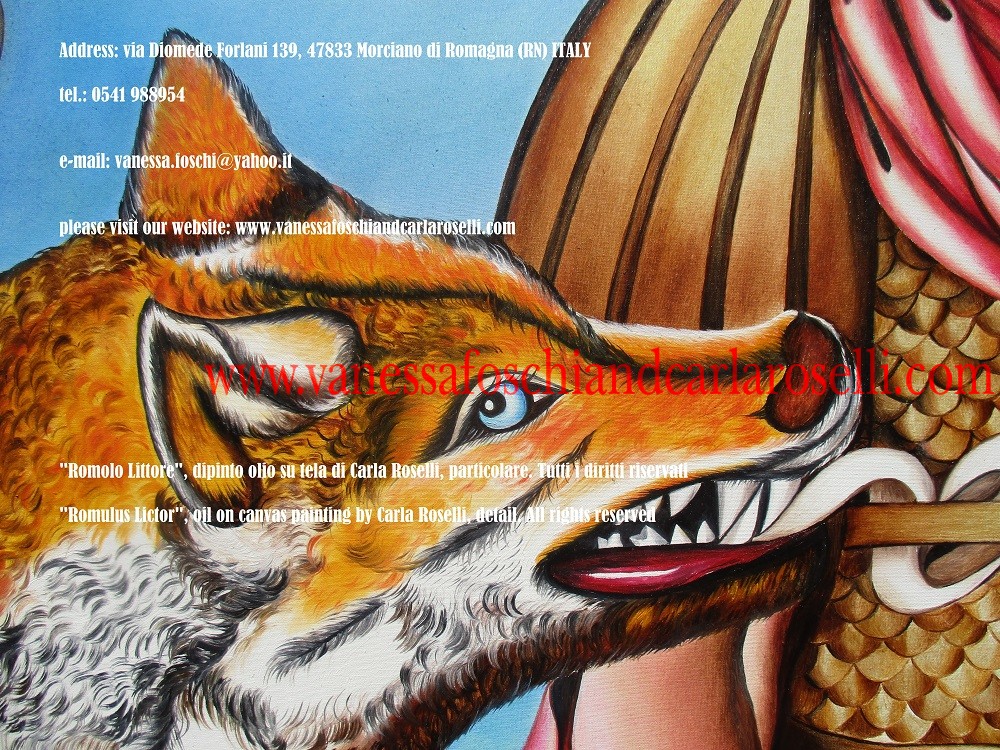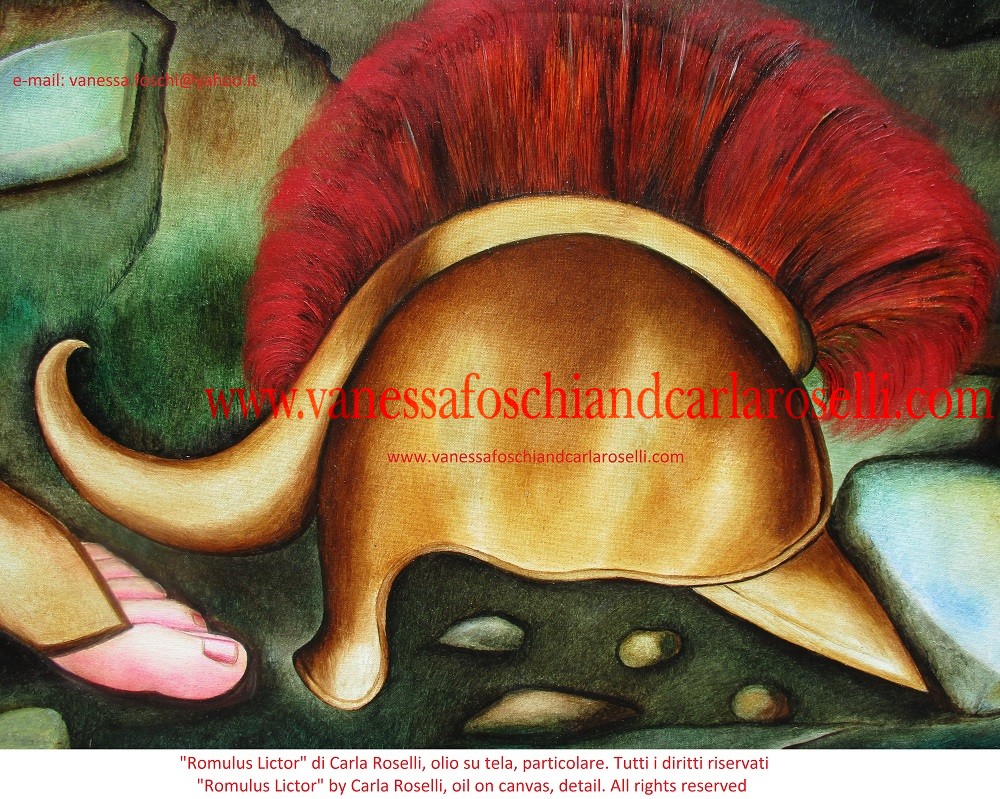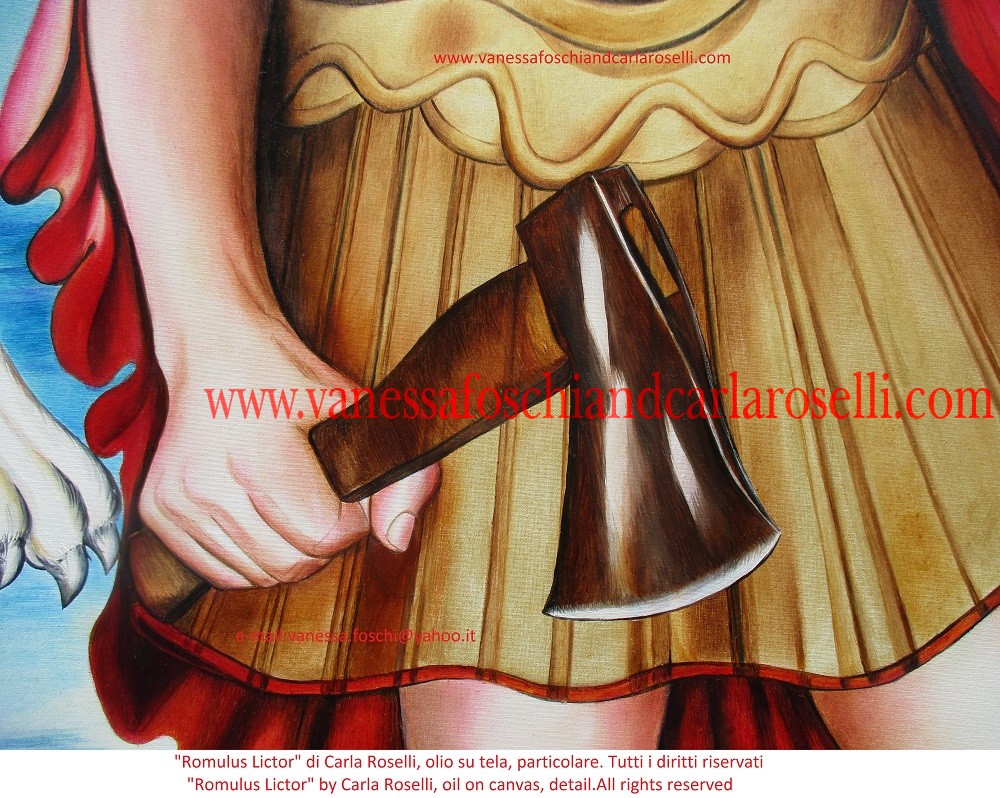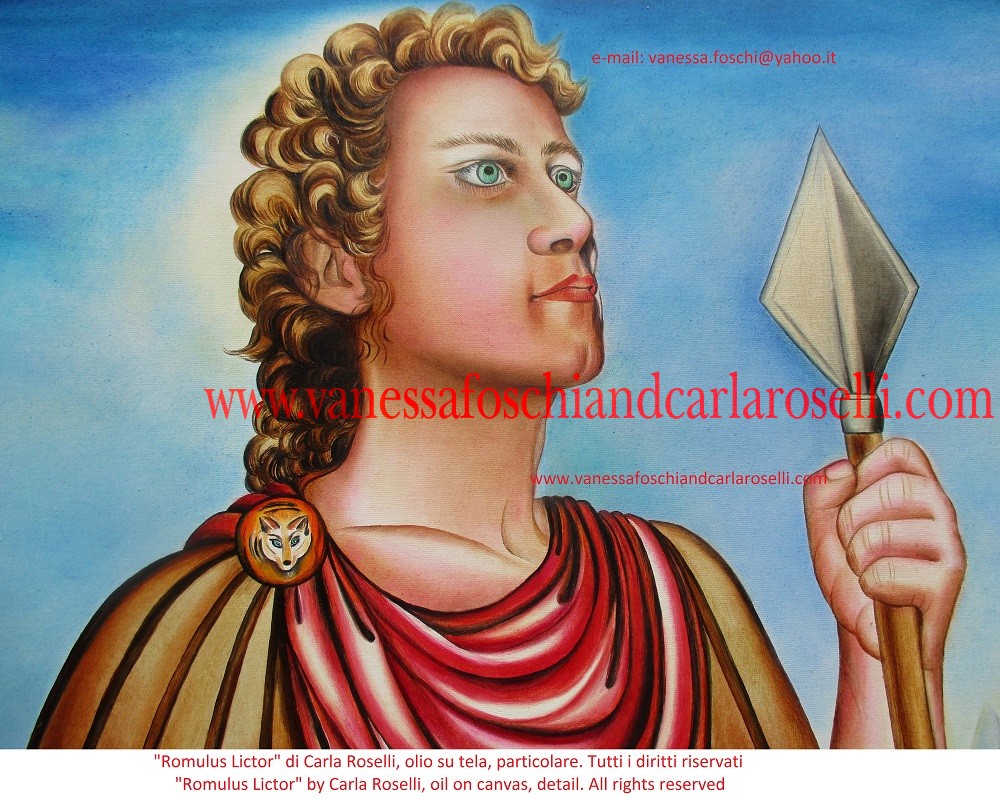 ROMULUS, THE FOUNDER
ROMULUS, THE FOUNDER
Ennius, quoted by Cicero, “De re publica” I,41, hails the first king of Rome with these words : “O Romule, Romule die, /qualem te patriae custodem di genuerunt! /O pater, o genitor, o sanguen dis oriundum!/ Tu produxisti nos intra luminis oras.” “O Romulus, godlike Romulus, what a guardian of the country the deities made you! O father, o parent, o blood flowing from the gods! You led us into the lands of light”.
SPOLIA OPIMA
During the Sabine wars he killed the king of Caenina, Acron. He had risen arms against the new people and challenged Romulus to single combat in front of the armies. Romulus conquered him in the duel, preyed on his armour and routed his troops . In the history of Rome he was the first to bring back a royal panoply as spoils of honor (spolia opima). Then, according to Livy, he consacretated them by an oak on the Capitol. Here he had vowed a temple to Juppiter Feretrius. This was the first temple dedicated in Rome.
The trunk of another huge oak was used as a dummy for the fitting and fastening of the armour(Plutarch, Parallel lives, Romulus) . In earlier times (Virgilius, Aenaeis) so was done by Aeneas with the arms of the tyrant of Agilla Mezentius. Then he brought it on his shoulders on foot, to the Capitol. Among him the exulting soldiers jested and his flowing locks were wreathed with winning laurel (Plutarch, Parallel lives, Romulus). For he was a man magnificent in his deeds and willing to show them off: “Cum factis vir magnificus tum factorum ostentator haud minor”, Livy, I, x, 5 .
The privilege of the spolia opima was obtained after slaying by own hand an opposing king. It was granted in Roman history only to two other generals: Aulus Cornellius Cossus for the killing of Etruscan king of Veii Lars Tolumnius; Marcus Claudius Marcellus for overthrowing Viridomarus, king of the Insubrian Gauls, in the battle of Clastidium in 222 b.C. (Propertius, IV, 10).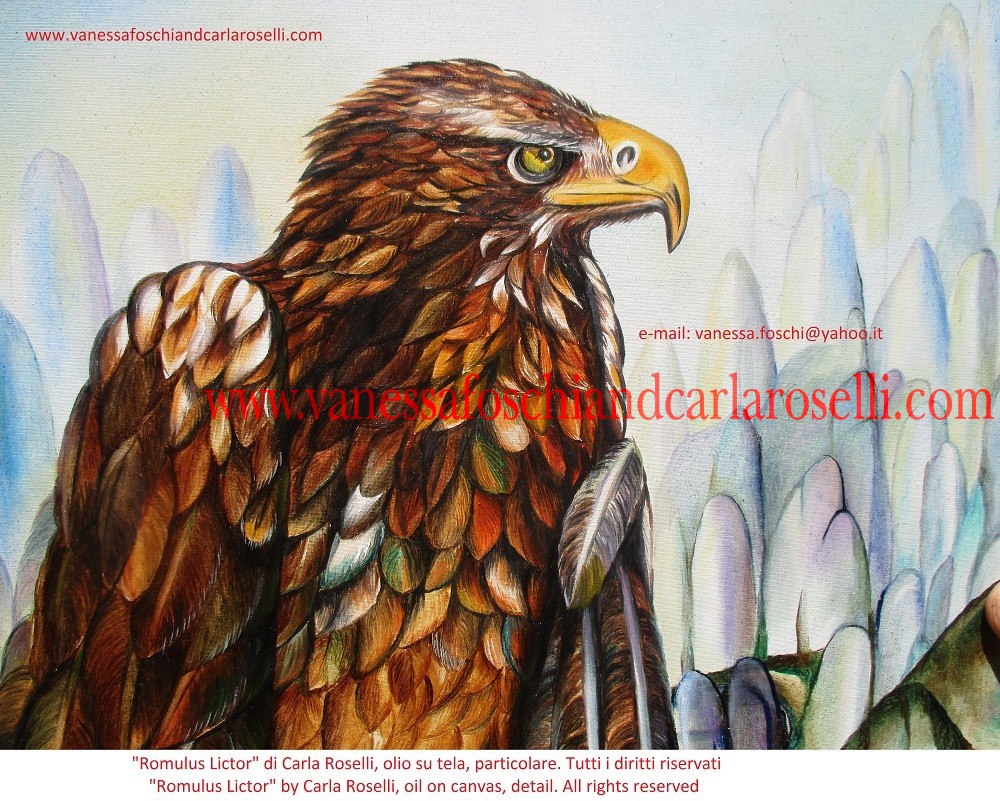
SON OF THE SHE-WOLF
In the painting by Carla Roselli the eagle, being as said by Pindar “àrchos oionòn”, the chief of birds (Pindar, Pythian I, v.11) stands for the kingship deriving from Iuppiter/Zeus (Homer, Iliad, I, vv. 238, 239 and v. 279).
The wolf is a tribute to the legend about the founding of Rome. It holds that the two orphaned brothers that built the city were found in the silty flood of the Tiber; they floated in in a wicker basket near the Ruminal Fig (Livy, Annals, I); the discoverer was a tawny she-wolf who proceeded to suckle them.
Romulus holds a spear which in his times had the same function as the royal crown, according to Justin (XIV, 3.3).
The corinthian capital forshadows the luster of the future empire.
Fasces and rods symbolize the authority and the power of life and death on subjects and legionaries.
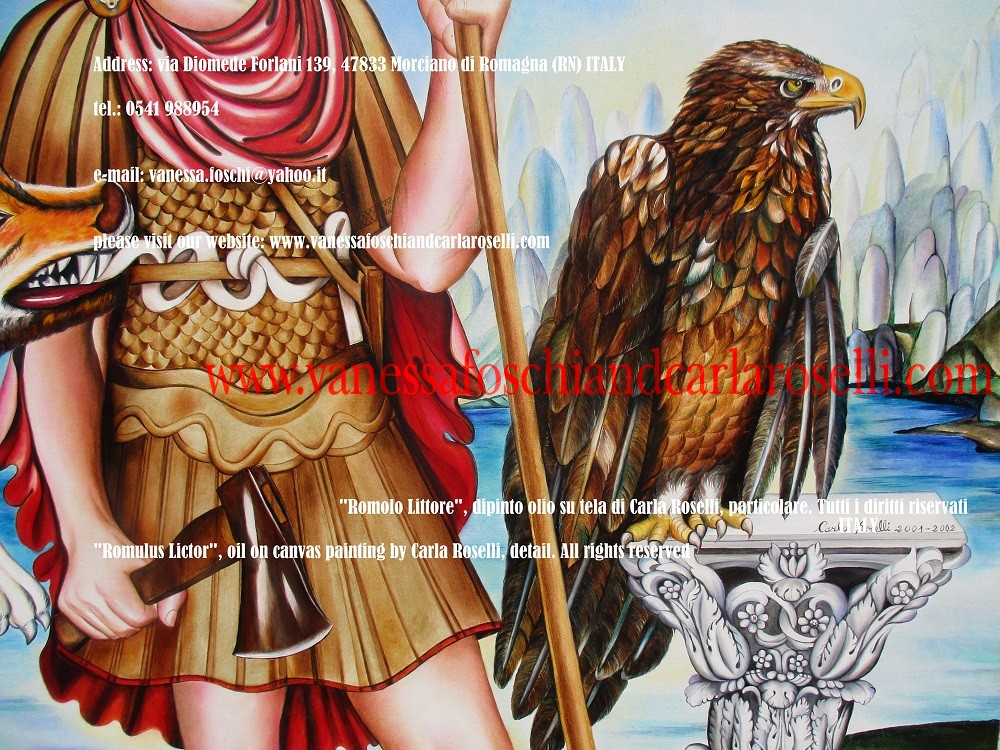 The axe reminds of the Lictors, twelve officers whose order was founded by Romulus (Livy, Annals, I). He was inspired for their number by an Etruscan tradition. Every time an overlord was elected each one of the twelve Tuscan cities sent an emissary by the new king: they would constantly follow him and impose his will.
The axe reminds of the Lictors, twelve officers whose order was founded by Romulus (Livy, Annals, I). He was inspired for their number by an Etruscan tradition. Every time an overlord was elected each one of the twelve Tuscan cities sent an emissary by the new king: they would constantly follow him and impose his will.
Painted by Carla Roselli, technique oil on canvas. Written by Dr.Vanessa Foschi May 2017/June 2018. All rights reserved
